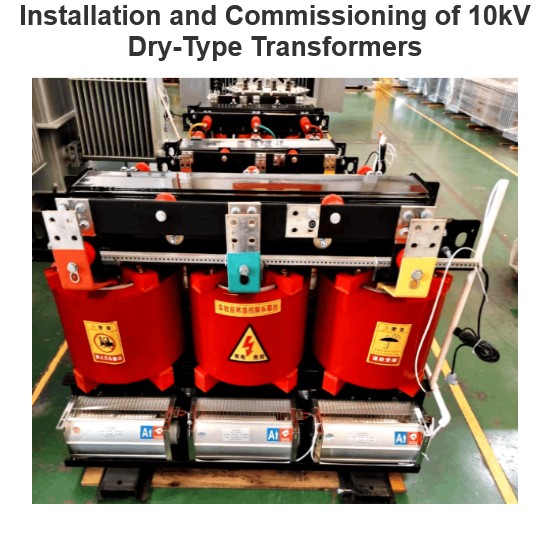How does silica gel play the role of hygroscopic agent in transformer ventilation system?
The Role of Silica Gel in Transformer Breathing Systems
Silica gel (Silica Gel) is a commonly used adsorbent with excellent hygroscopic properties, widely applied in power equipment for drying and moisture prevention. In transformer breathing systems, silica gel primarily functions to absorb moisture from the air entering the transformer tank, preventing water from entering the oil and insulation materials, thereby protecting the transformer's insulation performance.
1. Working Principle of Silica Gel
Adsorption Mechanism: Silica gel has a large number of micropores on its surface, which can adsorb water molecules from the air. As air passes through the transformer breather, the moisture is absorbed by the silica gel, allowing dry air to enter the tank.
Reversibility: The adsorption process of silica gel is reversible. When it becomes saturated with moisture, it can be regenerated by heating, releasing the absorbed water and restoring its hygroscopic capacity. This allows silica gel to be reused, extending its service life.
2. Application of Silica Gel in Transformer Breathing Systems
Breather: Transformers are typically equipped with a breather (also known as a desiccant breather) that connects the oil tank to the atmosphere. Inside the breather, silica gel filters the incoming air, ensuring that only dry air enters the tank. As the internal temperature of the transformer changes, the pressure inside the tank also fluctuates, causing gas exchange between the tank and the outside environment. The silica gel in the breather adsorbs moisture from the air, preventing wet air from entering the tank.
Sealing System: In some transformers, silica gel is also used as a desiccant in the sealing system to prevent moisture from entering the tank through poorly sealed areas.
Consequences of Inadequate Humidity Control
If humidity control in a transformer is inadequate, moisture can enter the tank and dissolve in the transformer oil or deposit on the insulation materials, leading to a series of issues that can severely affect the transformer's performance and lifespan. Below are the main consequences of inadequate humidity control:
1. Degradation of Insulation Performance
Impact on Insulation Materials: Moisture reduces the dielectric strength of both transformer oil and solid insulation materials (such as paper and fiber). As moisture content increases, the dielectric constant of the insulation materials rises, and the breakdown voltage decreases, making partial discharges or short circuits more likely.
Accelerated Aging: Moisture also accelerates the aging process of insulation materials, shortening the transformer's lifespan. In high-temperature conditions, moisture can combine with oxidation products in the oil to form acidic substances, further corroding the insulation materials.
2. Deterioration of Oil Quality
Excess Moisture in Oil: When moisture enters the transformer oil, it alters the physical and chemical properties of the oil. Moisture promotes oxidation reactions in the oil, generating acidic substances and precipitates, which reduce the oil's antioxidant capacity and cooling efficiency.
Impaired Heat Transfer: Moisture reduces the thermal conductivity of the oil, affecting the transformer's heat dissipation. This can lead to higher operating temperatures, accelerating the aging and damage of insulation materials.
3. Partial Discharge and Arc Faults
Partial Discharge: Moisture lowers the breakdown voltage of the oil, especially in high-voltage transformers, increasing the likelihood of partial discharge. Partial discharge not only damages insulation materials but can also lead to arc faults, causing sudden transformer shutdowns.
Arc Faults: Severe moisture ingress can result in arc faults, potentially leading to fires or explosions, posing significant safety risks to the power system.
4. Corrosion of Core and Windings
Corrosion of Metal Components: Moisture entering the transformer tank can come into contact with metal components such as the core and windings, causing corrosion. This effect is accelerated when the oil contains acidic substances, weakening the mechanical strength of the metal components and affecting the transformer's normal operation.
Winding Deformation: Moisture can cause the insulation layers of the windings to soften or swell, leading to winding deformation or short circuits. In severe cases, the windings may need to be replaced, increasing maintenance costs.
5. Impact on Transformer Reliability
Frequent Shutdowns: Due to degraded insulation performance, deteriorated oil quality, and other issues, the transformer may experience frequent faults, requiring shutdowns for maintenance, which can impact the stability and reliability of the power system.
Shortened Lifespan: Long-term inadequate humidity control can accelerate the aging of the transformer, shortening its lifespan and increasing the costs of maintenance and replacement.
Ensuring Effective Humidity Control
To ensure effective humidity control and avoid the above problems, the following measures are necessary:
Regular Inspection of Silica Gel Condition: Silica gel changes color (typically from blue to pink) when it absorbs moisture. It should be replaced or regenerated promptly when it becomes saturated to maintain its hygroscopic capacity.
Maintain Breather Ventilation: Ensure that the breather remains unobstructed, allowing air to pass through the silica gel for proper drying. Avoid blockages that could impede the flow of air.
Strengthen Sealing: Regularly inspect the transformer's sealing system to ensure that the tank is well-sealed, preventing moisture from entering through poorly sealed areas.
Monitor Moisture Content in Oil: Periodically sample and analyze the moisture content in the transformer oil to detect inadequate humidity control early and take corrective actions.
Install Dehumidification Equipment: For large transformers or those operating in humid environments, consider installing dehumidification equipment (such as dry air generators) to enhance humidity control.
Summary
Silica gel plays a crucial role in transformer breathing systems by effectively absorbing moisture from the air entering the tank, protecting the transformer's insulation performance and oil quality. If humidity control is inadequate, moisture can enter the tank, leading to a range of issues such as degraded insulation performance, deteriorated oil quality, partial discharge, metal component corrosion, and reduced transformer reliability and lifespan. Therefore, ensuring the good condition of silica gel and implementing effective humidity control measures are essential for maintaining the safe and stable operation of transformers.
The Electricity Encyclopedia is dedicated to accelerating the dissemination and application of electricity knowledge and adding impetus to the development and innovation of the electricity industry.













